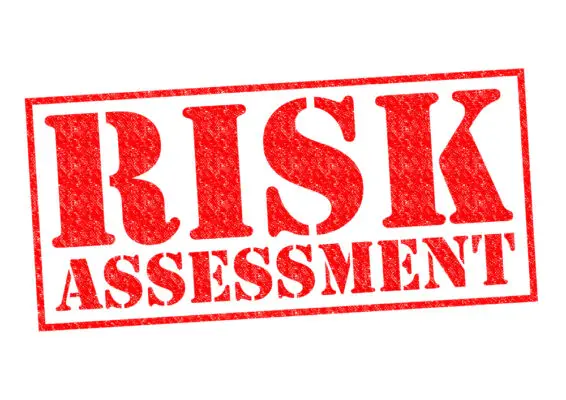A compensation risk assessment checklist is a systematic tool used to evaluate and analyze the potential risks associated with compensation plans within an organization.
This article aims to provide an in-depth understanding of this checklist, its purpose, and the risks it assesses.
The primary objective of a compensation risk assessment checklist is to identify and mitigate potential risks that may arise from compensation plans.
These risks can include legal non-compliance, internal inequities, high costs, or negative employee morale and motivation impacts.
Different types of risks are assessed by this checklist, such as market competitiveness, pay-for-performance alignment, incentive plan design effectiveness, and adherence to regulatory requirements.
Evaluating these factors systematically, organizations can develop strategies to address any identified risks effectively.
It is essential to have a universal definition of risk when considering compensation plans. Risk in this context refers to the possibility of adverse consequences resulting from implementing or managing these plans.
Organizations can proactively minimize their exposure and ensure fair and effective compensation practices throughout their workforce by comprehensively assessing potential risks through a structured process like the compensation risk assessment checklist.

What is a Compensation Risk Assessment Checklist?
Compensation risk assessment checklists are tools organisations use to evaluate and mitigate potential risks associated with compensation practices.
These checklists serve as a comprehensive guide for HR professionals to identify and address any potential issues or vulnerabilities in the organization’s compensation structure.
Systematically assessing internal equity, market competitiveness, and legal compliance, these checklists help ensure that the compensation practices align with organizational goals while minimizing the likelihood of legal disputes or employee dissatisfaction.
The Need for Compensation Risk Assessment Checklists
Conducting a comprehensive compensation risk assessment is crucial in ensuring fair and equitable pay practices within an organization.
Compensation risk analysis involves identifying potential risks associated with compensation policies and practices, such as wage disparities, discrimination, or non-compliance with legal requirements.
Organizations can use a compensation risk assessment checklist to systematically evaluate their compensation-related risks and take appropriate measures to address any identified issues.
This checklist provides a structured approach to assess various factors contributing to compensation risks, including job classifications, pay structures, performance evaluations, and market competitiveness.
Conducting a thorough and organized evaluation of these factors, organizations can proactively identify potential areas of concern and implement corrective actions to mitigate any existing or potential compensation-related risks.
Using a comprehensive compensation risk assessment ensures that employees are fairly compensated while minimizing legal and reputational liabilities for the organization.
Types of Risk Assessed by a Compensation Risk Assessment Checklist
A compensation risk assessment checklist evaluates various risks in an organization’s compensation practices.
Financial risks are assessed to determine if the compensation structure is financially sustainable and aligned with the organization’s goals.
Operational risks are evaluated to identify potential challenges in effectively implementing and managing the compensation program.
Material risks, such as legal or regulatory compliance, are assessed to ensure that the organization adheres to relevant laws and regulations.
Safety risks may also be considered to protect employees’ physical well-being, while potential risks encompass any other uncertainties or vulnerabilities that could impact the success of the compensation program.
Financial Risks
Financial risks in compensation are a critical area to consider when assessing the overall health and sustainability of an organization’s remuneration strategies.
These risks include potential financial losses from compensation practices, such as excessive executive pay or inadequate performance-based incentives. Organizations need to identify and mitigate these risks to ensure long-term success.
The following table outlines some common financial risk factors that a compensation risk assessment checklist may assess:
| Risk Factor | Description |
|---|---|
| Excessive Pay | Compensation packages that are disproportionately high compared to industry norms or company performance. |
| Unequal distribution of pay among employees can lead to discontentment and reduced morale. | Lack of alignment between employee performance and reward systems leads to decreased motivation and productivity. |
| Compensation Inequality | Lack of alignment between employee performance and reward systems leading to decreased motivation and productivity. |
| Financial Instability | The organization’s inability to meet its financial obligations due to unsustainable compensation practices. |
Organizations can implement various strategies to mitigate these financial risks, such as conducting regular market analyses of compensation packages.
Implementing performance-based bonus structures tied to organizational goals, promoting transparency in pay practices, and regularly monitoring the organization’s financial stability.
Proactively addressing these financial risks, organisations can balance fair compensation practices and long-term sustainability.
Operational Risks
Operational risks in remuneration strategies pose significant challenges to organizational sustainability and efficiency.
When conducting a compensation risk assessment checklist, it is crucial to identify and address potential operational risks that could impact the effectiveness of a company’s compensation strategy.
These risks may include:
- Inadequate systems and processes: Flawed or outdated systems can lead to errors in calculating and administering compensation, resulting in employee dissatisfaction.
- Lack of transparency: Insufficient communication about the compensation structure can create confusion and mistrust among employees, leading to decreased morale and productivity.
- Compliance failures: Non-compliance with legal and regulatory requirements related to compensation can result in fines, penalties, or reputational damage.
Addressing these operational risks is essential for mitigating material risks associated with the organization’s compensatory practices.
Implementing robust systems, enhancing transparency, and ensuring compliance, companies can promote fairness, improve employee satisfaction, and safeguard their long-term success.
Material Risks
Material risks are an important consideration in the compensation risk assessment checklist. These risks refer to potential threats that could significantly impact an organization’s financial stability and reputation, such as lawsuits, regulatory penalties, or damage to brand image.
To effectively assess material risks, conducting a thorough analysis of various factors that may contribute to their occurrence is essential. This includes evaluating the organization’s industry sector, business model, and operational processes.
Identifying and quantifying material risks, organizations can implement appropriate mitigation measures and develop contingency plans to minimize their potential impact.
The table below provides a visual representation of ideas related to material risks in the compensation risk assessment checklist context.
| Factor | Description | Impact |
|---|---|---|
| Lawsuits | Loss of customer trust decreased sales | Financial losses, reputational damage |
| Regulatory Penalties | Fines or sanctions imposed by regulatory authorities for non-compliance with compensation regulations | Financial losses, legal consequences |
| Brand Image Damage | Negative publicity or public perception resulting from unfair or unethical compensation practices | Loss of customer trust, decreased sales |
Considering these factors and conducting a comprehensive analysis, organizations can better understand and manage material risks associated with compensation practices.
Safety Risks
Safety risks are crucial in evaluating potential threats that may impact an organization’s overall well-being, invoking feelings of concern and urgency among stakeholders.
When conducting a compensation risk assessment, it is essential to thoroughly examine safety risks as they directly affect the employees’ physical well-being and can have severe consequences for both individuals and the organization.
Safety risks include workplace accidents, injuries, or exposure to harmful substances. By incorporating safety risks into the compensation risk assessment checklist, organizations can identify areas where preventive measures must be implemented.
This proactive approach ensures that compensation-related risk is minimized, protecting employees and reducing financial liability for the organization in case of accidents or injuries.
Therefore, accurately assessing safety risks is vital in safeguarding an organization’s overall stability and reputation.
Potential Risks
Potential risks are critical when evaluating threats that may impact an organization’s overall well-being, prompting stakeholders to feel a sense of urgency and concern.
In the context of the compensation risk assessment checklist, potential risks refer to the various dangers that can arise in relation to compensation-related matters. These risks can include issues such as inadequate pay structures, inequitable distribution of rewards, or insufficient policies for addressing employee grievances.
Potential risks may also encompass compliance failures with legal requirements or regulatory guidelines regarding compensation practices.
Organizations must assess these potential risks and develop appropriate mitigation strategies thoroughly.
Organizations can ensure fair and competitive compensation practices that promote employee satisfaction, attract top talent, and mitigate any potential negative impacts on their overall well-being and success.
Adverse Risks
Adverse risks hurt the organization’s financial stability and employee motivation. Identifying and mitigating these risks is crucial to ensure the compensation plan’s effectiveness.
Several adverse risks should be considered when conducting an incentive compensation risk assessment. These include but are not limited to:
- Overemphasis on short-term performance goals leads to neglect of long-term objectives.
- Inadequate alignment between individual incentives and overall organizational strategy.
- Lack of transparency in the reward allocation process
Comprehensively evaluating these adverse risks, organizations can develop robust strategies to mitigate them effectively and optimize their compensation plans for sustainable success.
Company-Specific Risk Factors
Company-specific risk factors can significantly influence the effectiveness of compensation plans and should be carefully considered to optimize organizational success.
When conducting a compensation risk assessment, it is crucial to identify and evaluate these unique risks specific to the company.
These factors may include industry trends, competitive pressures, financial stability, and organizational culture.
Industry trends can impact compensation practices by affecting market conditions and talent acquisition strategies. Competitive pressures from rival companies may necessitate offering higher compensation to attract and retain top talent.
Financial stability is another important factor determining compensation packages’ affordability. Lastly, understanding the organizational culture is essential as it influences employee expectations and perceptions of fairness in compensation.
Thoroughly assessing these company-specific risk factors, organizations can develop compensation plans that effectively align with their goals and mitigate potential adverse outcomes.
This ensures that compensation programs support overall business objectives while minimizing risks associated with inadequate or misaligned employee rewards.
Business Risks
Business risks, such as economic downturns and regulatory changes, can significantly impact the effectiveness of compensation plans and necessitate careful consideration to optimize organizational success.
These risks can disrupt business operations, create financial instability, and affect employee motivation.
To mitigate these risks effectively, organizations should consider incorporating them into their compensation risk assessment checklist. Businesses can identify potential threats and take proactive measures to protect themselves against adverse impacts.
Including business risks in the assessment allows for a comprehensive evaluation of compensation plans’ vulnerability to external factors.
It enables organizations to develop contingency strategies that ensure fair and competitive compensation practices while minimizing exposure to potential losses.
This approach enhances overall resilience and adaptability in an ever-changing business environment.

Degree of Risk Involved in Compensation Plans
The evaluation of compensation plans requires a careful analysis of the inherent risks associated with them.
Determining the degree of risk involved in compensation plans is crucial for organizations to effectively manage their compensation programs and ensure they align with their overall business objectives.
To assess the level of risk, organizations can use a compensation risk assessment checklist that includes various factors such as market competitiveness, legal compliance, performance-based incentives, and transparency.
Organizations can identify potential risks and develop strategies to mitigate them by analysing these factors.
Using a checklist provides a structured approach to evaluating compensation plans and helps organizations make informed decisions about their design and implementation.
This systematic assessment allows organizations to balance attracting top talent through competitive compensation packages and minimizing potential risks associated with such plans.
| Factors | Description |
|---|---|
| Market Competitiveness | Evaluates whether the organization’s compensation packages are competitive compared to industry standards |
| Legal Compliance | Assesses if the organization’s compensation practices adhere to relevant laws and regulations |
| Performance-based Incentives | Examines if there are appropriate mechanisms in place to link rewards with individual or team performance |
| Transparency | Considers how transparent the organization is in communicating its compensation philosophy and practices |
Universal Definition of Risk in the Context of Compensation Plans
Incentive programs are designed to motivate employees by offering rewards tied to specific performance goals.
However, determining the appropriate level of risk in these programs is crucial, as excessive risk can lead to negative consequences such as unethical behavior or financial instability.
Understanding how companies assess and manage this balance is essential for effective compensation planning.
The balance between Risk and Reward in Incentive Programs
An optimal balance between risk and reward is crucial in designing incentive programs.
Incentive programs are designed to motivate employees to achieve specific goals and objectives but also introduce risk.
The balance between risk and reward must be carefully considered to ensure that the program effectively motivates employees while minimizing potential negative consequences.
When designing incentive programs, organizations should use a compensation risk assessment checklist to evaluate the potential risks associated with the program.
This checklist helps identify potential risks such as an excessive focus on short-term goals, lack of alignment with overall business objectives, or unintended consequences such as unethical behavior or excessive risk-taking.
Organizations can use this checklist to assess and mitigate potential risks while ensuring that the incentive program effectively motivates employees to achieve their goals.
Companies’ Appetite for Taking on Excessive Risk
Companies’ propensity to assume unwarranted levels of risk is a critical factor that warrants examination in the context of incentive programs. Compensation committees play a crucial role in striking a balance between risk and reward, ensuring that incentives do not encourage excessive risk-taking.
Companies must assess their risk appetite and align it with their compensation structures. An important aspect of this assessment involves evaluating the potential consequences of excessive risk-taking on the company’s financial stability and long-term sustainability.
Companies must consider factors such as industry norms, regulatory requirements, and market conditions when determining their risk appetite.
Companies can better manage the inherent risks by incorporating these considerations into their compensation risk assessment checklist.
These risks are associated with incentive programs and ensure that rewards are commensurate with performance without compromising the organisation’s overall health.
Frequently Asked Questions
What are the key components of a compensation risk assessment checklist?
The key components of a compensation risk assessment checklist include analyzing the potential risks associated with compensation practices, evaluating the effectiveness of internal controls, reviewing compliance with legal and regulatory requirements, and assessing the impact on overall organizational performance.
How often should a compensation risk assessment be conducted?
It is generally recommended to conduct these assessments annually or when significant changes in the organization’s compensation structure or market conditions occur.
Are there any specific legal or regulatory requirements related to compensation risk assessment?
Legal and regulatory requirements related to compensation risk assessment vary by jurisdiction. For example, in the United States, financial institutions must conduct annual compensation risk assessments under the Dodd-Frank Act.
What are the potential consequences of not conducting a compensation risk assessment?
The potential consequences of not conducting a compensation risk assessment include increased exposure to legal and regulatory risks, financial losses due to inappropriate compensation practices, damage to reputation, and decreased employee morale and retention.
How can organizations effectively mitigate the risks identified through a compensation risk assessment?
Organizations can effectively mitigate the risks identified through a compensation risk assessment by implementing measures such as establishing clear policies and procedures, conducting regular audits, providing training to employees, and ensuring transparency in compensation practices.

Conclusion
The Compensation Risk Assessment Checklist is a valuable tool used by organizations to evaluate and manage potential risks associated with their compensation plans.
It helps identify and analyze various types of risks, such as legal, financial, and reputational risks.
Assessing the degree of risk involved in compensation plans, organizations can make informed decisions to mitigate these risks effectively.
Having a universal definition of risk in the context of compensation plans ensures consistency and clarity when evaluating and managing these risks.
The Compensation Risk Assessment Checklist is an essential resource for organizations to safeguard against potential risks in their compensation plans.

Chris Ekai is a Risk Management expert with over 10 years of experience in the field. He has a Master’s(MSc) degree in Risk Management from University of Portsmouth and is a CPA and Finance professional. He currently works as a Content Manager at Risk Publishing, writing about Enterprise Risk Management, Business Continuity Management and Project Management.

